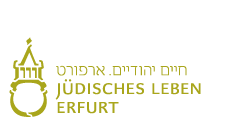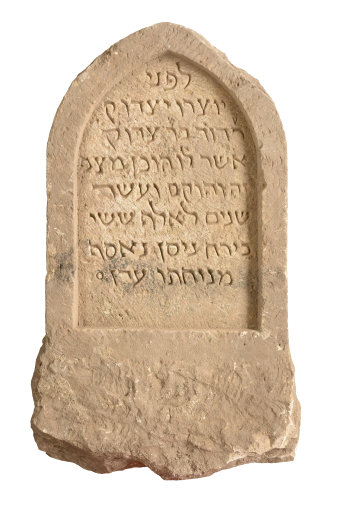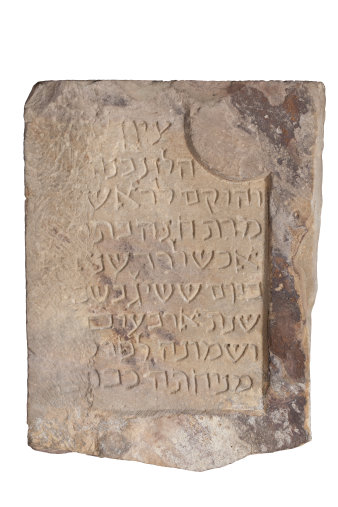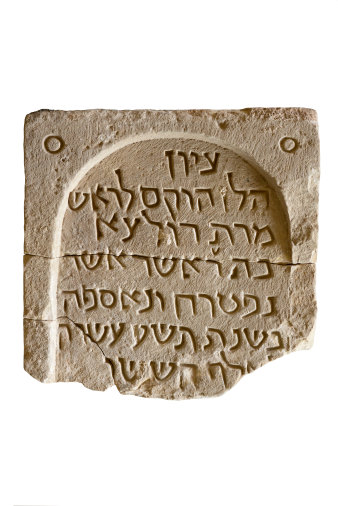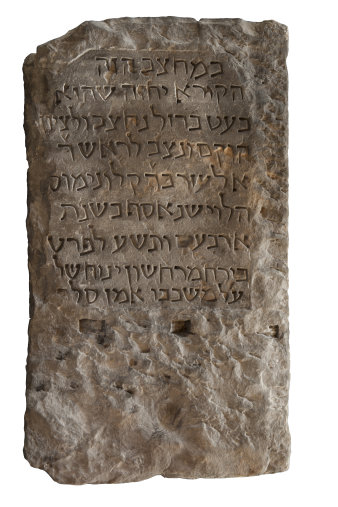Medieval Jewish Cemetery
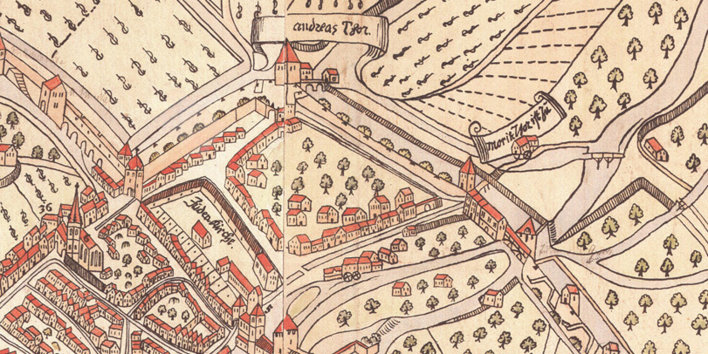
At Moritztor, today’s Große Ackerhofsgasse, the cemetery for Erfurt’s Jewish community was located in the Middle Ages. As prescribed by their faith, it was situated outside the area inhabited by Jews. Since when the cemetery existed cannot be ascertained exactly. But it is probable that the site was used for burials ever since the beginnings of the community. The oldest gravestones still preserved today are from the 13th century.
In 1453 the Erfurt Council forced the emigration of the Jews from the town. The cemetery was razed and in its place a municipal barn and later the large granary were erected. The gravestones were used as building material all over town, which is why until today they are occasionally rediscovered in buildings or in the pavement.
Former Jewish cemetery on the city map
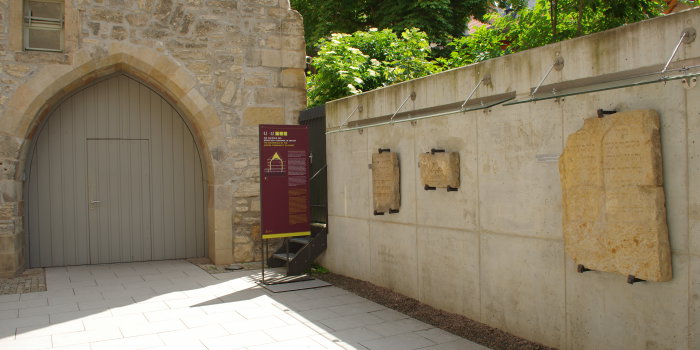
A selection of these medieval stones is on display in the courtyard of the Old Synagogue.
In the long term, all medieval Jewish gravestones are supposed to be gathered in the display depot in the cellar of the so-called "Stone House" on Benediktsplatz. Presently, already around 100 stones are kept here. The display depot is only accessible to the public within guided tours on special occasions, such as the European Heritage Days.

The gravestones from Erfurt originate from the 13th to 15th century and hence from a period from which Jewish gravestones have very rarely endured. The oldest preserved Jewish gravestone we know of so far was erected in 1244 for a woman whose name is not legible any more. The second eldest gravestone is the one of Hanah, daughter of Yehiel ha-Kohen, from 1245. This stone is so far the one with the most complex inscription.
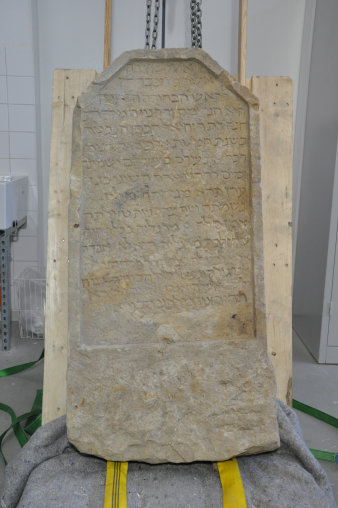
This is the gravestone
which was set up at the head of the blessed young woman:
It is the loveable, respectable mistress
Ḥanah, daughter of Yehiel ha-Kohen, who passed away
In the year five thousand and five
after the creation of the world, on the twenty-eighth
day of the month Adar II. In the Garden
Eden may she find rest, sanctuary to her soul,
and with the pious women may she walk.
Amen. Selah. – A pearl, in any place,
wherever she goes, she is a pearl, lost is she only
to her husband, Yitshak bar Pesah Hanelah.
I am banished, but my soul is serene
at her descent and ascent.
And to the Lord I shall ascent. Amen speak the reader.
And there shall be mercy by the Creator.
Translation of the inscription (according to M. Boockmann. In: Landeshauptstadt Erfurt und Universität Erfurt (Hg.), Erfurter Schriften zur jüdischen Geschichte, Band 2: Die Grabsteine des mittelalterlichen jüdischen Friedhofs von Erfurt. Jena/Quedlinburg 2013, p. 160 - in German only)
-
Gravestone of David, 1245 Picture: © City of Erfurt
-
Gravestone of Hanna, 1288 Picture: © City of Erfurt
-
Gravestone of Dultsa, 1259 Picture: © City of Erfurt
-
Gravestone of Elazar, 1288 Picture: © City of Erfurt
To this day, 110 tombstones have been preserved. Preserved descriptions, transcripts and/or photographs have made aware of around 92 other stones. Among the conserved stones, 23 are complete or nearly so; 87 tombstones have been fragmentarily preserved. The stones known so far have been catalogued, their inscriptions are translated. They were published in 2013 as volume 2 of the series "Erfurter Schriften zur jüdischen Geschichte" (Erfurt Proceedings on Jewish History).
Literature (in German only): Landeshauptstadt Erfurt und Universität Erfurt (Hg.), Erfurter Schriften zur jüdischen Geschichte, Band 2: Die Grabsteine des mittelalterlichen jüdischen Friedhofs von Erfurt. Jena/Quedlinburg 2013
